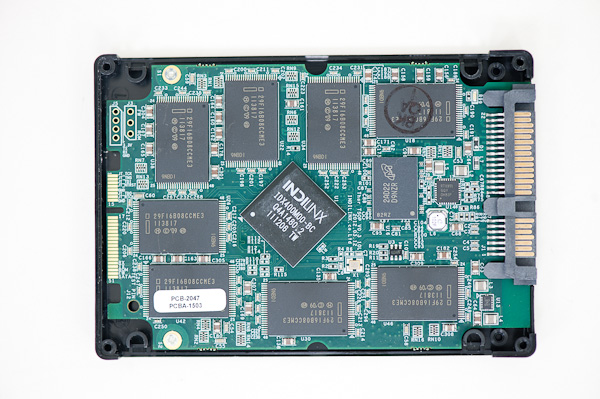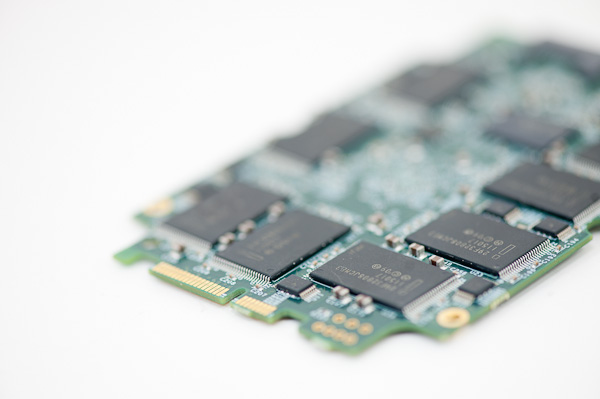OCZ Vertex 4 Review (256GB, 512GB)
by Anand Lal Shimpi on April 4, 2012 9:00 AM ESTFinal Words
After years of begging, OCZ has finally delivered much of what we've wanted in an SSD: low write amplification and very good random/sequential write performance. It could use a more aggressive real-time garbage collection algorithm but running an OS with TRIM, that's mostly picking nits. The Vertex 4 takes write performance seriously and delivers handsomely, besting even the latest from Intel and Samsung. The advantage over SandForce is clear, particularly because Everest 2 and the Vertex 4 are able to deliver consistent performance regardless of data composition. SandForce's realtime compression/dedupe technology is definitely exciting, but if you're able to deliver similar or better performance without the inconsistency of data-dependency the choice is obvious. SandForce definitely set the bar very high with the SF-2281, but Everest 2 has the potential to exceed it - assuming OCZ/Indilinx can deliver on its promises.
Sequential read performance is unfortunately just as important for client workloads, and the Vertex 4 doesn't do nearly as well there. If OCZ is able to improve its low queue depth sequential read performance through a firmware update in the coming weeks, it will truly have built a drive (and controller) that are among the fastest on the market. I see no reason that OCZ shouldn't be able to achieve this given the sequential read performance we saw from Octane, but as is always the case with these types of launches we have to review the product we have, not the product we'll get.
Should nothing change, the tradeoff is an interesting one. OCZ effectively gives us three of the four corners of raw performance, and competitive sequential read speeds under heavy load. Does giving up the bottom end of sequential read performance matter? For users with very write intensive or generally IO heavy workloads, the tradeoff is likely worth it. It almost feels like OCZ should have launched the enterprise version of the Vertex 4 first, given its strengths. For more typical mainstream client workloads, the Vertex 4 isn't as good of a fit. The drive is still usable, but it's far from industry-leading when it comes to low queue depth read speeds. Admittedly it is industry-leading in write performance even in mainstream workloads, but the combination of the two is really what's missing. As we demonstrated with our copy test, the Vertex 4 is able to deliver good real world read performance but as our Light Storage Bench suite shows the read performance isn't consistently high. It's a frustrating dynamic, one that I truly hope is mitigated with the next firmware release as OCZ has promised.
Idle power consumption is also a concern of mine. As it stands, consuming over 1W when doing nothing isn't ok for a notebook drive. OCZ tells us a fix is on the way for this as well, but someone buying today needs to keep this in mind if it's going into a portable. The impact to overall battery life shouldn't be tremendous, but if you're on a quest to squeeze every last minute out of a single charge you may want to consider some of the alternatives.
Validation is and has always been a hot topic with every new SSD. OCZ is taking things more seriously and more importantly, has better access to fix bugs as they come up. With direct access to the firmware source code (a benefit of owning Indilinx), OCZ shouldn't have the same limits it has had in the past when working with third party controller vendors. The presumption is that now, if bugs come up in the field or during testing, they can be addressed as quickly as the Indilinx firmware engineers can type out a workaround. It remains to be seen how this works in practice, but the concept is at least sound.
In the end, as with most brand new controllers and SSD reviews our conclusion is to wait. Vertex 4 is a unique drive that really delivers a lot of what we've been asking for from a performance standpoint, but with some tangible caveats that we're told will be resolved in the coming weeks. If you're buying an SSD today, our standarding recommendation (particularly for Mac users) is Samsung's SSD 830. If you have a workload that demands better write and/or random read performance, let's see how this and other soon-to-be-announced drives behave over time before jumping the gun.












127 Comments
View All Comments
ViviTheMage - Wednesday, April 4, 2012 - link
mmmmmm, iops.LB-ID - Wednesday, April 4, 2012 - link
It's still a drive from OCZ, a company that has repeatedly and blatantly used its customer base as unpaid beta testers, and lambasted them when they dared to complain about it. No thank you. The fastest drive in the world is of no use to me if it's causing my computer to BSOD constantly. I'll be spending my money and that of my many clients on drives with proven track records for reliability and excellent customer service, both sadly lacking in OCZ products.hackztor - Wednesday, April 4, 2012 - link
Ocz is the only one that actually got to the bottom of the bsod screen on sandforce. In the end it was sandforce fault because they made the controller. All the other companies waited and then used the fix. Intel is the exception who waited a whole year before releasing them to validate but they still use sandforce controllers. Vertex4 is the 1st time that ocz now owns the controller and firmware that goes into the product. I hope this will prove to be better and have quicker fixes. Ocz is always the first to release the technology so expect some issues, but thats what people take for early adopting. I had 5 vertex 1 die on me and then they upgraded me to a vertex2. Just purchased the 4 so hope all goes well.taltamir - Wednesday, April 4, 2012 - link
"Ocz is the only one that actually got to the bottom of the bsod screen on sandforce."Actually that was intel.
hackztor - Wednesday, April 4, 2012 - link
Not true. Ocz pushed sandforce to finally find the issue based on what the users were telling ocz while sandforce kept trying to deny the issue and could not find it in a lab environment. If you see further down I said intel waited a year with validation going on.breakSSD - Thursday, April 5, 2012 - link
You have no idea about ssd validation if you think Ocz pushed sandforce for BSOD.The fact is that Intel found this and kept sandforce busy with fixing the issue while ocz even though knowing the issue release agility 3. Anyways doesn't matter who takes the credit, people know where to go when it comes to reliability.iceman98343 - Friday, April 6, 2012 - link
you do realize intel 520s are now getting bsods?!Obsoleet - Saturday, April 7, 2012 - link
You go to Samsung for reliability. Iceman is correct, word is spreading of more 520 stability issues. If you want the fastest, most reliable SSD get the 830 as Anand recommends.Einy0 - Saturday, April 7, 2012 - link
At work we have deployed about 50 - 80GB Intel 320 Series Drives and so far nearly 60 - 64GB Samsung 830 Drives. The Samsung drives are screamers but we've seen a lot of strange issues with the Samsung drives that we never had with the Intel drives. We have not had a single drive from either company fail or come DOA. That amazes me personally, not a single dud. We've literally had dozens of faculty members come ask us what we did to their computer that made it so fast all of a sudden. The issues we've had with the Samsung drives about 1 in 10 causes Windows mini-setup to freeze. We re-image the drive again it works just fine. We are thinking maybe the compatibility with some SATA controllers isn't as robust on the Samsung drives as it is on the Intel drives.gandx - Tuesday, April 24, 2012 - link
Or choose a SSD with a marvell controller like the Corsair Performance Pro or Plextor M3P. Both are fast and stable. I would never choose a SSD with sandforce again after using a vertex 3 for a while with lot or problems and i'm obviously not the only one.